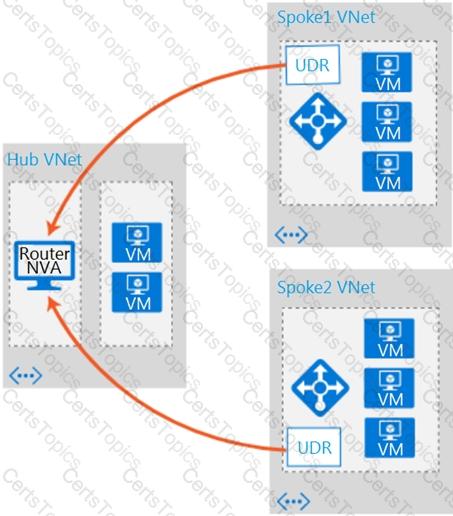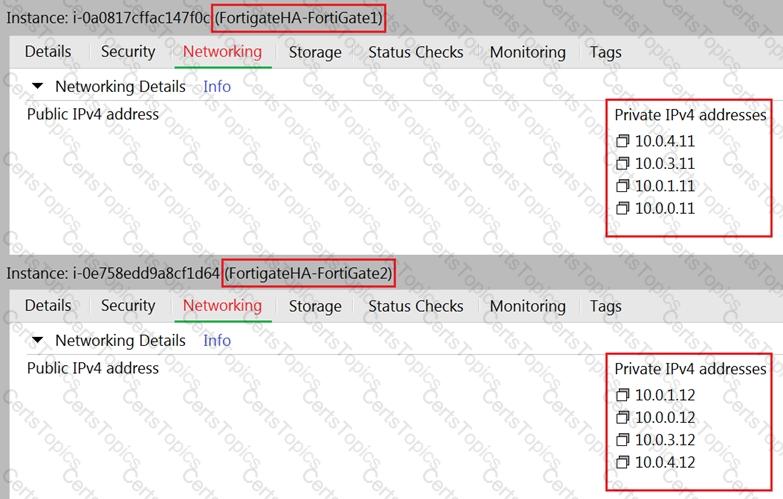Refer to the exhibit.

The exhibit shows a topology where multiple connections from clients to the same FortiGate-VM instance, regardless of the protocol being used, are required.
Which two statements are correct? (Choose two.)
Which two statements about Microsoft Azure network security groups are true? (Choose two.)
Which statement about FortiSandbox in Amazon Web Services (AWS) is true?
Refer to the exhibit.

In your Amazon Web Services (AWS) virtual private cloud (VPC), you must allow outbound access to the internet and upgrade software on an EC2 instance, without using a NAT instance. This specific EC2 instance is running in a private subnet: 10.0.1.0/24.
Also, you must ensure that the EC2 instance source IP address is not exposed to the public internet. There are two subnets in this VPC in the same availability zone, named public (10.0.0.0/24) and private (10.0.1.0/24).
How do you achieve this outcome with minimum configuration?
What is the bandwidth limitation of an Amazon Web Services (AWS) transit gateway VPC attachment?
Which two Amazon Web Services (AWS) topologies support east-west traffic inspection within the AWS cloud
by the FortiGate VM? (Choose two.)
Refer to the exhibit.

Which two conditions will enable you to segregate and secure the traffic between the hub and the spokes in Microsoft Azure? (Choose two.)
An organization deployed a FortiGate-VM in the Google Cloud Platform and initially configured it with two vNICs. Now, the same organization wants to add additional vNICs to this existing FortiGate-VM to support different workloads in their environment.
How can they do this?
Refer to the exhibit.

You are configuring an active-passive FortiGate clustering protocol (FGCP) HA configuration in a single availability zone in Amazon Web Services (AWS), using a cloud formation template.
After deploying the template, you notice that the AWS console has IP information listed in the FortiGate VM firewalls in the HA configuration. However, within the configuration of FortiOS, you notice that port1 is using an IP of 10.0.0.13, and port2 is using an IP of 10.0.1.13.
What should you do to correct this issue?